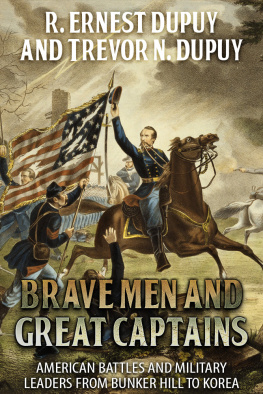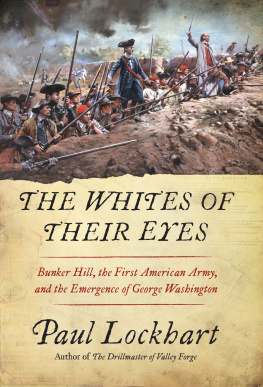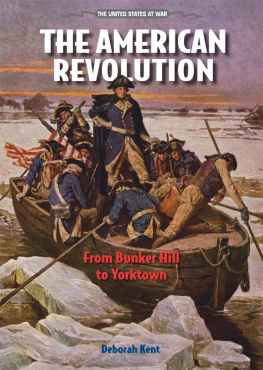Brave Men and Great Captains
R. Ernest Dupuy
Trevor N. Dupuy
R Ernest Dupuy, Trevor N. Dupuy 1993
R Ernest Dupuy and Trevor N. Dupuy have asserted their rights under the Copyright, Design and Patents Act, 1988, to be identified as the authors of this work.
First published in 1993 by NOVA Publications.
This edition published in 2016 by Endeavour Press Ltd.
To Cadet Trevor Nevitt Dupuy, Jr., who, in common with his comrades of the United States Corps of Cadets, must be prepared to assume the responsibility of leadership in the years to come
ACKNOWLEDGMENTS
To Laura Nevitt Dupuy, Army wife and Army mother, the authors join in tribute for her keen insight, logical reasoning and literary guidance which has kept this work on the rails, checking every impulse to wander from the chosen frame of reference.
Table of Contents
FOREWORD
It has been said by others that America is entering the decade of decision. This is true. It is also coming into an age of full maturity. It is attaining a stature in the world that brings with it a responsibility for wise and able leadership. Part of this leadership is military, and a very significant part it may be.
It would be well for us to understand our past military leadership. It has not all been good, but on the whole it has been more than adequate. American military leadership has been different from that of others as our people are different from others. That it will be different in the future goes without saying. Undoubtedly, however, we will develop military leadership of a breadth and ability to grasp effectively global and space problems.
Colonel Dupuy and his son have written a book on our past military leadership, beginning with military leaders in the early days of the Republic and continuing through the Korean War. They have analyzed and presented men of varied background and ability. The Dupuys are well qualified to do this, both because of their military background and because of their combined insight into military thinking and their ability to present their ideas in written form. I have known both of them for a number of years and I respect their military judgments and ability.
Brave Men and Great Captains is thorough; it is a comprehensive treatment of its subject, covering the good leadership as well as the bad. It is well worth reading by military and civilian alike. Besides vii this, it is entertaining reading. It should provide a basis for understanding the peculiar qualities of American leadership and thus for projecting those qualities into the future to meet the challenge that will certainly be ours in the coming decade.
JAMES M. GAVIN
Lt. General, U.S.A., Ret.
PREFACE
What Is Leadership?
Military leadership is multum in parvo ; it embraces many things. Through good leadership men can be galvanized into performance of acts transcending the norms of their individual reactions and capabilities. Poor leadership, on the other hand, confuses; it stifles initiative; it can bring panic on the battlefield to the most stout-hearted soldier.
The very mention of the word leadership creates in the American mind a succession of images bridging nine score and more of our nations history. Leading all will be a big man in blue and buff, mounted on a great white charger. Prominent also in the procession will be a group of men in Confederate gray and Union blue. The final figure is that of a man in modern khaki, wearing a visored cap, wading through island surf. But, varied though their uniforms and superficial appearance may be, all of these apparitions share two common characteristics: they are in the forefront of action, and their slogan is Follow me!
How does one define leadership?
Definitions, paraphrases and synonyms can be found literally by the hundreds. The authors of this book prefer a definition used at West Point:
Leadership is the art of influencing and directing people to an assigned goal in such a manner as to command their obedience, confidence, respect and loyal co-operation.
But no definition can tell us the essential ingredients of leadership. In the analysis of this book we have endeavored to distill the essence of leadership, as demonstrated in American military history, to provide a yardstick against which the accomplishments of individual leaders can be measured.
*
The Yardstick of Leadership
The requirements of the yardstick were in fact established by the failures of command in our first national battle, Bunker Hill, on June 17, 1775. The standards by which later leaders could be judged were etched indelibly by the achievements of George Washington. And the pattern of leadership the record of actual accomplishments against the high standards of the yardstick has been woven continuously throughout our history by the successes and the failures, too of Washingtons subordinates and his and their successors. So, in reading the following pages, it may be helpful to the reader to bear in mind the essential measures on that yardstick of leadership, as the authors envisage it.
First, and perhaps most important, is professional military skill or competence , comprising knowledge of military history, judgment in the flexible application of theoretical principles, and the ability to take positive, energetic action in applying knowledge and principles to specific situations.
Second is the need for thorough understanding of the human tools of the leader ; i.e., a knowledge of the capabilities and limitations of his men.
Here it might be advisable to digress briefly to consider what qualities in the American soldier have most concerned our military leadership. It is interesting to note that the major personal characteristics of the colonists who fought at Bunker Hill, and who followed Washington to Yorktown, were to be revealed by Americans in all of the subsequent wars of our history.
Most of these men were individualists, quite dissimilar in character to the bovine peasantry providing the bulk of the the soldiery of Europe. And this individualism, as all American leaders have since discovered to their frequent annoyance and frustration, led to a pervading suspicion of authority, and thus to resistance of the discipline which is the catalyst of an army.
These men combined imagination with intelligence. The leader who failed to recognize these qualities in his men, and who was unable to keep one mental jump ahead of them, could not succeed. These were qualities, too, which enabled the men to perceive more readily than their European counterparts the immediate and potential dangers of a situation; a perception which would often impel them to avoid such dangers even if this meant running away in battle.
On the other hand, the colonists at Bunker Hill, like their descendants, possessed the qualities of self-reliance and initiative to a degree hitherto and elsewhere unknown in private soldiers. Related to these, and strikingly exemplified by colonial marksmanship at Bunker Hill, was precision in the use of tools and weapons. These were characteristics, when properly controlled and utilized, that were to make the trained American soldier the finest in the world.
Which leads directly to another measurement of leadership on our yardstick: insistence upon high standards of training and discipline , whereby the leader, knowing his men, their strengths and weaknesses, capitalizes on their capabilities and minimizes their limitations.
Then there must be, inherent or acquired, inspirational ability ; men must recognize their leadership and respond to it confidently.
Other necessary qualities for the leader are personal courage , which is related to inspirational ability, and perseverance and determination in adversity .






